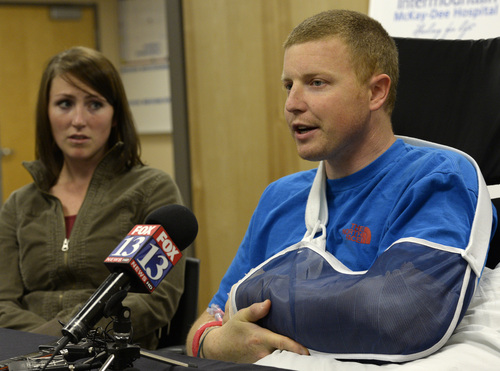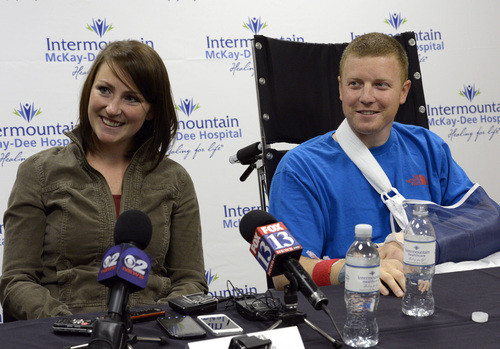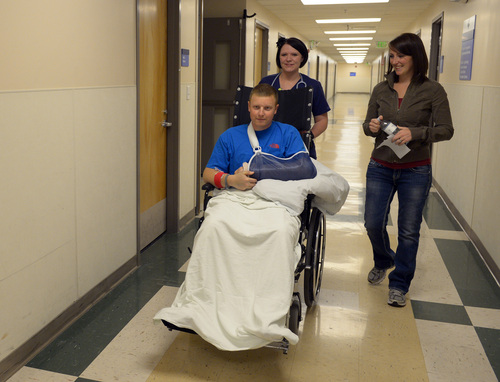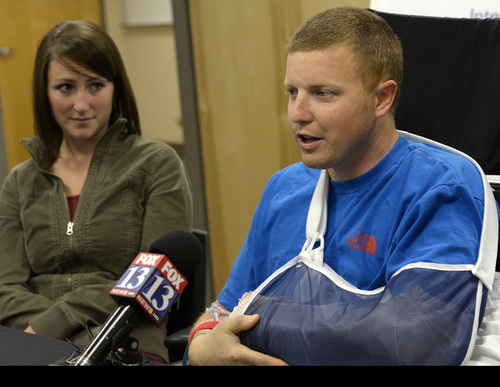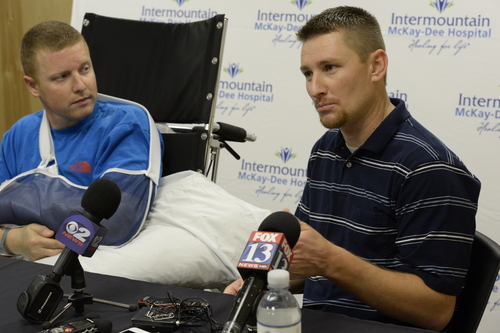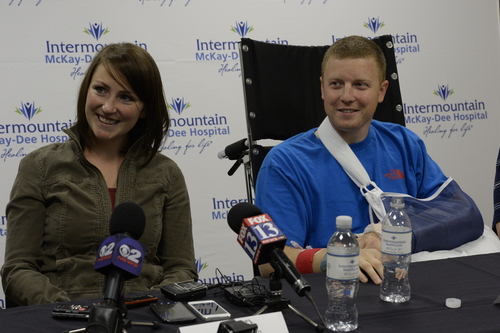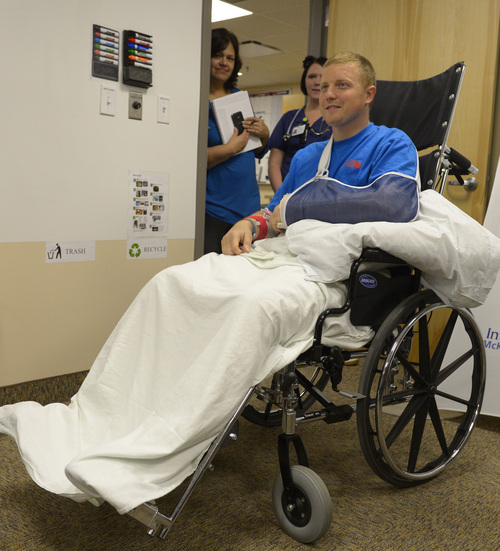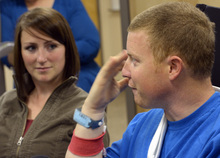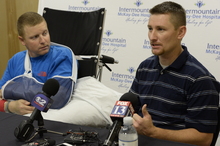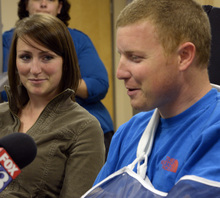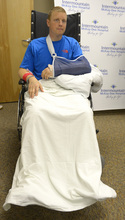This is an archived article that was published on sltrib.com in 2014, and information in the article may be outdated. It is provided only for personal research purposes and may not be reprinted.
Matt Morgan never heard the avalanche that overtook and buried him Saturday.
The Farmington man was snowmobiling down a hill in Snow Slide Canyon, an area of Idaho near the Utah border that he had ridden through plenty of times before, when the snow in his peripheral vision started rushing past him. His snowmobile suddenly became unstable, and he blacked out.
It took his friends about 10 minutes to dig him out from under 2 feet of thick snow. He credits them, their practice at snow rescues and their gear for saving his life.
"I feel extremely blessed," Morgan said Wednesday from a wheelchair in Ogden's McKay-Dee Hospital. He broke both femurs and his left arm in the slide, but he is otherwise all right and gets to go home in two weeks.
Justin Hilderth, of Bountiful, was with Morgan and two other friends that day. As Morgan cut across the hill and turned down, Hilderth saw the snow break at the top of the hill. Hilderth called out, but Morgan couldn't hear him. Hilderth said he felt helpless as Morgan disappeared into the slide, which was about 500 to 600 feet wide.
The trio waited to see if Morgan would come up, and, when he did not, two of them used their beacons and tools to find and dig him out while Hilderth ran up the hill to find reception and call for help. Morgan came to almost as soon as they uncovered him.
The first thing Morgan remembers is "my friend calling my name and … brushing the snow off my face. I said 'I love you guys' … [and] they said 'We love you, too, and we're glad you're here.' "
Morgan did not know that there was a high risk for avalanches that weekend. From now on, he said he is going to pay closer attention to the forecasts and warnings.
An average of four people die in Utah avalanches each year. There have been 11 human-triggered avalanches since Friday — the latest on Tuesday, when a skier triggered a slide out of bounds near Snowbasin Resort.
Morgan grew up in an active, winter sports family, loves the outdoor opportunities this state provides and said he plans to keep snowmobiling on high-risk days. But those trips will be informed decisions, and he will be sure to avoid the high-risk areas, he said. He has a wife waiting for him to come home.
They had celebrated their one-year wedding anniversary on Jan. 4. He was supposed to be home by 7 p.m. that Saturday, his wife Emilee Morgan said. "It was just supposed to be another day on the mountain," she said.
But that afternoon, she got a call from his parents and learned of the avalanche. His father broke down and passed the phone to his wife, who was also crying, but assured Emilee Morgan that her husband was alive.
"There was a little bit of shock," Emilee Morgan said. "But I knew the type of guys he was with [who] were well prepared, and I knew he was going to be OK."
It took about eight hours for rescuers to get Matt Morgan into an ambulance. Emilee Morgan finally saw her husband again at 11:30 p.m. at the hospital. He was already smiling, talking and joking with the nurses.
Emilee Morgan said she has faith in her husband's decision to keep snowmobiling and that he will not take unnecessary risks.
The persistent weak layer of snow that has been producing the recent avalanches should start stabilizing by next week, said Bruce Tremper of the Utah Avalanche Center. Generally speaking, the snow should remain dormant until the next storm, when the new load will renew the risk for slides, Tremper said.
The avalanche expert cautioned that such a risk persists days after the storm has moved on, so people should practice patience before venturing into the backcountry. "On a beautiful, sunny day, it's hard for the human brain to realize things can still be dangerous so long after a storm," Tremper said.
The center forecasts a high risk of avalanches in the Uintas on Thursday, as well as a considerable chance of slides in the Salt Lake, Provo, Ogden and Logan-area mountains. —
Avalanche deaths per year in Utah
2013 • 4
2012 • 4
2011 • 2
2010 • 5
2009 • 0
2008 • 4
2007 • 7
2006 • 2
2005 • 5
2004 • 4
Source: Utah Avalanche Center


